Tex-Mex cuisine, a fusion of Mexican and American culinary traditions, has become increasingly popular in recent years. With its rich flavors and diverse ingredients, Tex-Mex offers a unique dining experience that appeals to a wide range of palates. This article aims to explore the regional varieties of Tex-Mex food, highlighting the distinct characteristics and influences from different parts of Mexico.
One example that exemplifies the diversity within Tex-Mex cuisine is the case of enchiladas. While enchiladas originated in Mexico as traditional corn tortillas filled with various ingredients like meat or cheese, their preparation varies significantly across regions. In Northern Mexico, for instance, enchiladas are typically made with flour tortillas rolled around fillings such as shredded beef or chicken before being smothered in a tangy tomato-based sauce. On the other hand, in Southern Texas, enchiladas are commonly served flat on a plate with layers of filling and topped with chili con carne or melted cheese. These variations demonstrate how regional influences have shaped and diversified the Tex-Mex culinary landscape.
Northern Mexican Cuisine
Imagine yourself sitting in a bustling restaurant located in the charming city of Monterrey, Mexico. As you peruse the menu, your eyes are immediately drawn to the enticing array of dishes that exemplify Northern Mexican cuisine. One standout example is the iconic cabrito, tender roasted kid goat served with warm tortillas and a side of tangy salsa verde.
Northern Mexican cuisine, also known as Norteño cuisine, encompasses a rich culinary heritage shaped by its geographical proximity to the United States and its historical ties to ranching traditions. This region’s gastronomy showcases a unique blend of flavors influenced by indigenous ingredients and techniques passed down through generations.
To fully appreciate the distinctiveness of Northern Mexican cuisine, it is essential to understand its key characteristics:
- Emphasis on grilled meats: The region’s vast cattle ranches have greatly contributed to the prominence of grilled meats in Norteño cuisine. Whether it be juicy cuts of beef or succulent portions of cabrito, these smoky delights form the heart and soul of many traditional dishes.
- Abundance of wheat-based products: Unlike other parts of Mexico where corn takes center stage, Northern Mexican cuisine relies heavily on wheat-based products such as flour tortillas and savory breads like bolillos (crusty rolls). These staples add depth and versatility to meals.
- Incorporation of spicy salsas: In true Tex-Mex fashion, Northern Mexican cuisine embraces fiery salsas made from various chili peppers. From mild jalapeños to tongue-searing habaneros, these vibrant condiments bring an element of heat that complements and enhances flavors.
- Fusion with American influences: Due to its close proximity to Texas, Northern Mexican cuisine has experienced significant cross-cultural exchanges with American culinary traditions. This fusion can be seen in dishes like carne con chile gravy (meat smothered in spicy sauce) or cheese-stuffed enchiladas topped with chili con carne.
To further illustrate the diversity and complexity of Northern Mexican cuisine, consider the following table showcasing some beloved dishes from this region:
| Dish | Description | Key Ingredients |
|---|---|---|
| Carne Asada | Grilled beef marinated in a flavorful blend of spices | Beef, lime juice, garlic, cumin |
| Tamales Norteños | Savory corn masa dough wrapped around fillings like pork or cheese | Corn masa dough, meat/cheese filling |
| Chiles Rellenos | Roasted poblano peppers stuffed with savory ingredients | Poblano peppers, ground meat, cheese |
| Machaca con Huevo | Shredded dried beef cooked with scrambled eggs | Dried beef, eggs |
As we delve into the nuances of Southern Mexican cuisine in the next section, it becomes evident that each regional variety within Mexico’s culinary landscape has its own distinct charm. From the bold flavors of Northern Mexico to the vibrant traditions found down south, exploring these gastronomic treasures promises an unforgettable journey through taste and culture.
Southern Mexican Cuisine
Section H2: Southern Mexican Cuisine
In the previous section, we explored the diverse flavors and culinary traditions of Northern Mexican cuisine. Now, let’s delve into the vibrant world of Southern Mexican cuisine, which showcases a distinct array of dishes and ingredients that reflect the rich cultural heritage of this region.
To illustrate the uniqueness of Southern Mexican cuisine, consider an example from Oaxaca, one of Mexico’s gastronomic gems. The famous dish called “mole” exemplifies the complexity and depth of flavors in this southern state. Mole combines various spices such as chili peppers, chocolate, nuts, and seeds to create a savory sauce that is often paired with poultry or meat. This intricate blend of ingredients produces a harmonious symphony on the taste buds, showcasing the creativity and attention to detail found in Southern Mexican cooking.
Southern Mexican cuisine can be characterized by its use of traditional ingredients and cooking techniques passed down through generations. Here are some notable aspects:
- Variety of chili peppers: From smoky chipotle to fiery habanero, there is no shortage of chili pepper varieties used in Southern Mexican cuisine. These peppers add layers of heat and flavor to dishes.
- Corn-based dishes: Corn holds great significance in Southern Mexican culture, and it forms the foundation for many staple dishes like tamales and tortillas.
- Indigenous herbs and spices: Traditional herbs like epazote and hoja santa bring unique aromas and tastes to soups, stews, and sauces.
- Indigenous fruits: Exotic fruits like jicama, mamey sapote, and pitaya find their way into refreshing beverages or serve as accompaniments to savory dishes.
Allowing your senses to truly experience the essence of Southern Mexican cuisine would not be complete without exploring some mouthwatering examples:
| Dish | Description | Region |
|---|---|---|
| Pozole | A hearty soup made with hominy, meat (typically pork), and various toppings like lettuce, radishes, and lime. | Guerrero |
| Cochinita Pibil | Slow-roasted marinated pork served in tacos or tortas, typically accompanied by pickled onions. | Yucatán |
| Tlayudas | Large crispy tortillas topped with beans, cheese, avocado, and your choice of meats or vegetables. | Oaxaca |
| Chiles en Nogada | Stuffed poblano peppers covered in a creamy walnut sauce and garnished with pomegranate seeds for a festive touch. | Puebla |
Southern Mexican cuisine is a tapestry woven from centuries-old traditions that continue to captivate food enthusiasts around the world. Its vibrant flavors and cultural significance make it an essential part of Mexico’s culinary heritage.
Transitioning into the subsequent section about Baja California Cuisine:
As we embark on our gastronomic journey through the regional varieties of Mexican food, let us now explore the distinctive cuisine found in Baja California.
Baja California Cuisine
Transition from the previous section:
Building upon the rich flavors and culinary traditions of Southern Mexican Cuisine, we now turn our attention to another distinct regional variety within Tex-Mex cuisine. Exploring the coastal region of Baja California, this vibrant culinary scene offers a unique fusion of Mexican and Californian influences.
Section: Baja California Cuisine
Baja California, with its picturesque landscapes and proximity to the Pacific Ocean, has given rise to an eclectic blend of flavors in its local cuisine. Let us delve into the diverse elements that characterize Baja California Cuisine.
One prominent feature is the abundant use of fresh seafood sourced directly from the surrounding waters. For instance, imagine savoring a mouthwatering dish of grilled lobster tail drizzled with zesty lime sauce—a tantalizing example showcasing how Baja California’s culinary creations skillfully incorporate oceanic delights. This emphasis on marine fare not only reflects the region’s geographical advantages but also highlights its close ties to traditional Mexican cooking techniques.
To further illustrate the distinctive qualities of this cuisine, consider the following:
- Flavors: The dishes often showcase a harmonious balance between spicy and tangy flavors, incorporating ingredients like citrus fruits, chilies, cilantro, and garlic.
- Influences: Baja California’s proximity to California has led to cross-cultural inspirations where Mexican recipes are fused with Californian ingredients such as avocadoes and olive oil.
- Street Food Culture: The streets of Baja California come alive with numerous food stalls serving up delectable tacos filled with marinated meats or succulent shrimp—enticing locals and visitors alike.
- Wine Production: In recent years, Baja California has gained recognition for its flourishing wine industry. Vineyards dotting the landscape produce exquisite wines that pair perfectly with regional delicacies.
Let us now take a closer look at some key components characterizing Baja California Cuisine through this table:
| Ingredients | Prevalent Dishes | Notable Techniques |
|---|---|---|
| Fresh seafood | Grilled lobster tail | Ceviche preparation |
| Citrus fruits | Shrimp tacos with lime | Marinating techniques |
| Avocadoes | Californian-inspired dishes | Guacamole making |
| Chilies | Spicy fish stew | Chili roasting |
The vibrant flavors, coastal influences, and cultural diversity all converge to make Baja California Cuisine an exciting culinary experience. As we now transition into the next section on Yucatecan Cuisine, let us continue our exploration of Tex-Mex regional varieties and uncover their unique gastronomic offerings.
Transition to subsequent section (Yucatecan Cuisine):
As we journey further into the realm of Tex-Mex cuisine, we shift our focus towards a distinct regional variation known as Yucatecan Cuisine—a delectable fusion of indigenous Mayan ingredients and Spanish influences.
Yucatecan Cuisine
Baja California Cuisine, known for its unique fusion of Mexican and Mediterranean flavors, offers a delightful culinary experience that is distinct from other regional varieties of Tex-Mex cuisine. With its proximity to the Pacific Ocean, Baja California boasts an abundance of fresh seafood which serves as a foundation for many traditional dishes.
To illustrate the diversity within Baja California Cuisine, consider the case study of “Camarones al Ajillo,” or garlic shrimp. This popular dish showcases the influence of both Mexican and Mediterranean cuisines. Succulent shrimp are sautéed in olive oil with minced garlic, red chili flakes, and a splash of lime juice – melding together bold flavors from different cultures into one harmonious creation.
Visitors to Baja California can explore a wide range of dishes beyond seafood delicacies like Camarones al Ajillo. Here are some notable elements that contribute to the uniqueness of this regional cuisine:
- Usage of local ingredients such as avocado, tomatoes, olives, and citrus fruits.
- Integration of Mediterranean influences through the inclusion of olive oil, herbs like rosemary and thyme, and cooking techniques like grilling.
- Incorporation of indigenous ingredients like cactus paddles (nopales) and mesquite wood for smoky flavors.
- Emphasis on healthy eating by utilizing organic produce and incorporating lighter cooking methods.
The table below further demonstrates the diverse array of dishes found in Baja California Cuisine:
| Dish | Description | Key Ingredients |
|---|---|---|
| Fish Tacos | Crispy battered fish served in warm tortillas | Fresh catch from the sea |
| Ensenada Ceviche | Citrus-marinated raw fish salad | Lime juice, cilantro |
| Chiles Rellenos | Roasted poblano peppers stuffed with cheese | Oaxaca cheese |
| Lobster Burritos | Grilled lobster wrapped in a flour tortilla | Avocado, salsa fresca |
Baja California Cuisine presents an exciting blend of flavors and culinary techniques that showcase the region’s cultural influences. As we move forward to explore Yucatecan Cuisine, we will delve into another distinct regional variety of Tex-Mex cuisine, characterized by its rich Mayan heritage and vibrant use of local ingredients.
Oaxacan Cuisine
Yucatecan Cuisine showcases the unique flavors and ingredients found in the Yucatan Peninsula of Mexico. This regional variety of Mexican food is known for its fusion of Mayan, Spanish, Caribbean, and Middle Eastern influences. An interesting case study that exemplifies this culinary tradition is Cochinita Pibil – a traditional dish made from marinated pork cooked in banana leaves.
One characteristic feature of Yucatecan Cuisine is the abundant use of local spices and herbs. The region’s tropical climate provides an ideal environment for growing ingredients such as annatto seeds, habanero peppers, and sour oranges. These ingredients come together to create flavorful marinades like recado rojo, which is used to season meats before they are slow-cooked or grilled.
In addition to their vibrant flavors, Yucatecan dishes often have complex cooking techniques that require time and patience. For instance:
- Achiote paste: Made by grinding annatto seeds with other spices, this paste adds a distinct red color and earthy flavor to many dishes.
- Cebollas encurtidas: Quick-pickled onions served as a refreshing accompaniment to balance out rich and spicy flavors.
- Sopa de lima: A soup made with shredded chicken, lime juice, tortilla strips, and aromatic spices like cilantro and oregano.
- Relleno negro: A hearty black turkey stew flavored with charred chiles and roasted vegetables.
To fully appreciate the richness of Yucatecan Cuisine, here is a table showcasing some popular dishes along with their key ingredients:
| Dish | Key Ingredients |
|---|---|
| Cochinita Pibil | Pork shoulder, annatto paste |
| Pollo Pibil | Chicken thighs, citrus juices |
| Papadzules | Hard-boiled eggs, pumpkin seed sauce |
| Panuchos | Fried tortillas, refried black beans |
The next section will delve into the distinctive flavors and culinary traditions of Oaxacan Cuisine. Known for its rich mole sauces and diverse use of ingredients such as chocolate and grasshoppers, this regional variety offers a unique dining experience that is sure to captivate food enthusiasts.
Veracruz Cuisine
Section H2: Oaxacan Cuisine
Following our exploration of the rich flavors and culinary traditions of Oaxacan cuisine, we now turn our attention to another vibrant variety within the Tex-Mex landscape: Veracruz Cuisine. Let us delve into this distinctive regional cuisine that showcases a fusion of indigenous ingredients with Spanish influences.
To illustrate the unique characteristics of Veracruz Cuisine, let us consider an example dish – Huachinango a la Veracruzana. This traditional delicacy features red snapper cooked in a tangy sauce made from tomatoes, onions, garlic, olives, capers, and jalapeños. The blend of these diverse ingredients exemplifies the eclectic nature of Veracruz Cuisine, which draws inspiration from both its coastal location and historical ties to Spain.
Veracruz Cuisine can be characterized by several key elements:
- Fresh Seafood: With its extensive coastline along the Gulf of Mexico, it comes as no surprise that seafood plays a prominent role in Veracruz Cuisine. Shrimp, crab, octopus, and various fish species are commonly featured in dishes such as ceviche or empanadas.
- Afro-Caribbean Influences: Due to its history as a major port city during colonial times, Veracruz has experienced significant cultural exchanges with African and Caribbean communities. This influence is evident in dishes like Arroz a la Tumbada (rice mixed with seafood) or Bacalao Con Ajo (salted codfish with garlic).
- Spicy Flavors: Veracruzano cuisine embraces bold and fiery flavors. It incorporates abundant usage of chili peppers such as jalapeños or habaneros to add heat and depth to many dishes.
- Indigenous Ingredients: Veracruz is home to a wide array of local produce including vanilla beans, corn, avocados, tropical fruits like papaya or mangoes. These ingredients form the backbone of Veracruzano cuisine, lending it a distinct and authentic flavor profile.
To further understand the nuances of Veracruz Cuisine, let us explore its key ingredients in the following table:
| Ingredient | Flavor Profile | Common Usage |
|---|---|---|
| Vanilla Beans | Fragrant | Desserts, Beverages |
| Plantains | Sweet | Main Dishes, Sweets |
| Epazote | Earthy | Soups, Stews |
| Tamarind | Tart | Sauces, Drinks |
Through this exploration of Veracruz Cuisine’s unique features and culinary traditions, we gain insights into yet another fascinating facet of Tex-Mex gastronomy. This regional variety continues to captivate food enthusiasts with its diverse flavors and cultural influences. Whether savoring a plate of Huachinango a la Veracruzana or relishing the bold spiciness that characterizes many dishes within this style, Veracruz Cuisine offers an exciting journey for our taste buds.



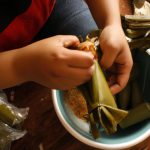
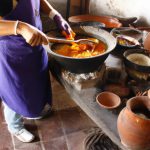

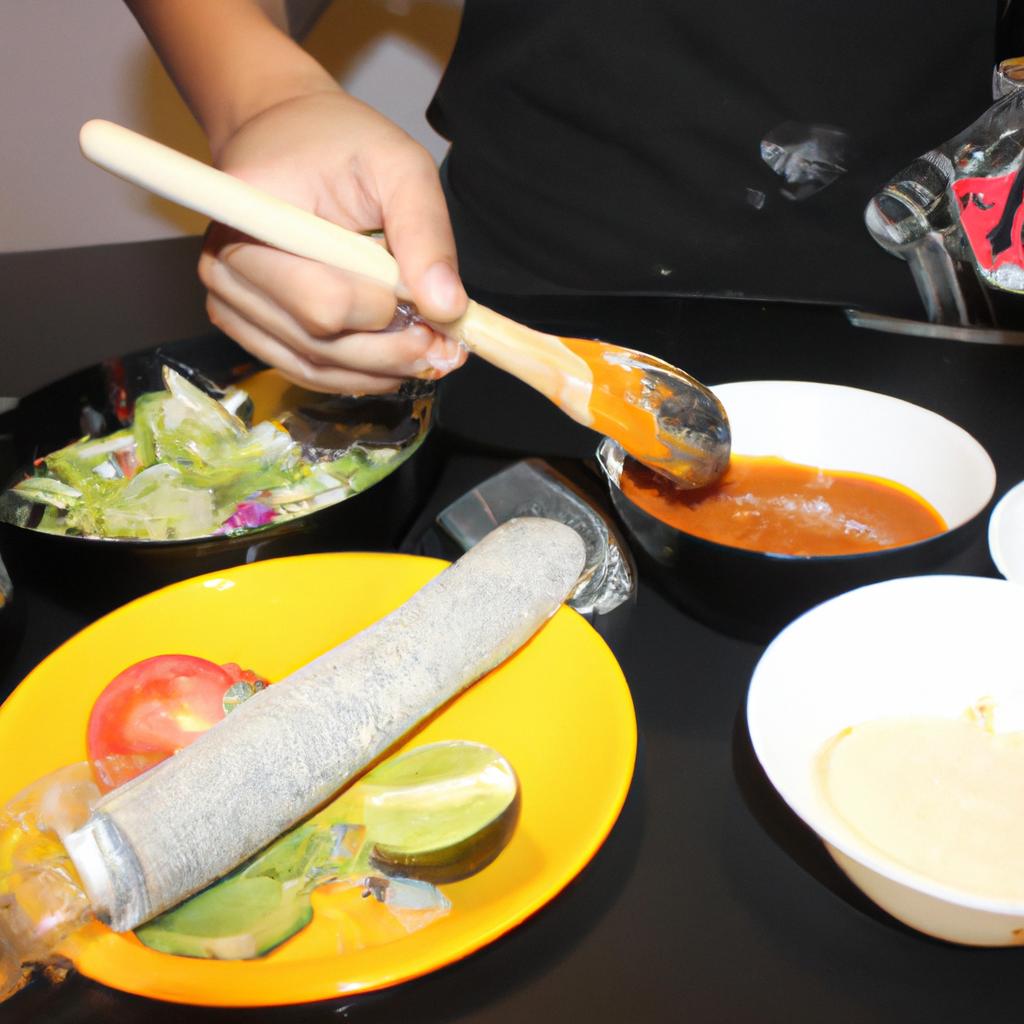

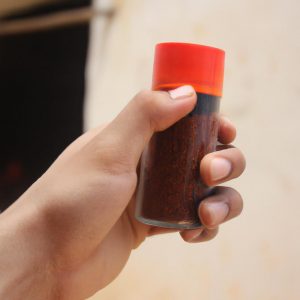
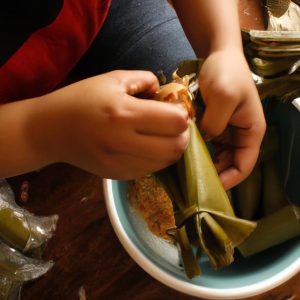
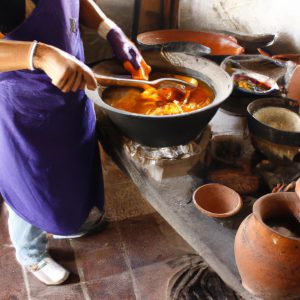
More Stories
Michoacan Cuisine: Regional Varieties of Mexican Food
Veracruzana Cuisine: Regional Varieties of Mexican Food
Oaxacan Cuisine: Regional Varieties of Mexican Food